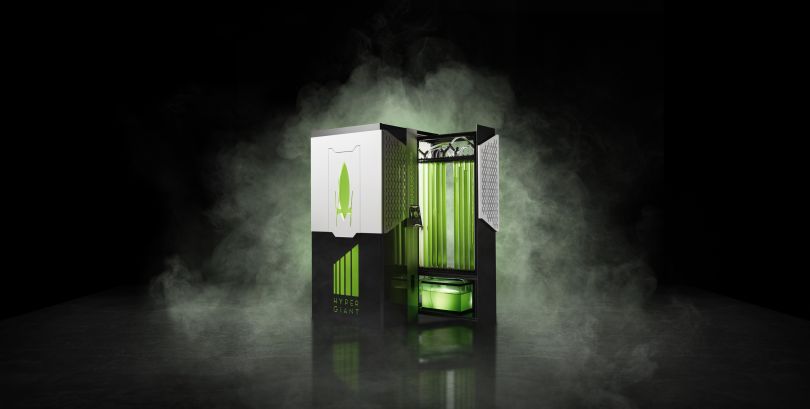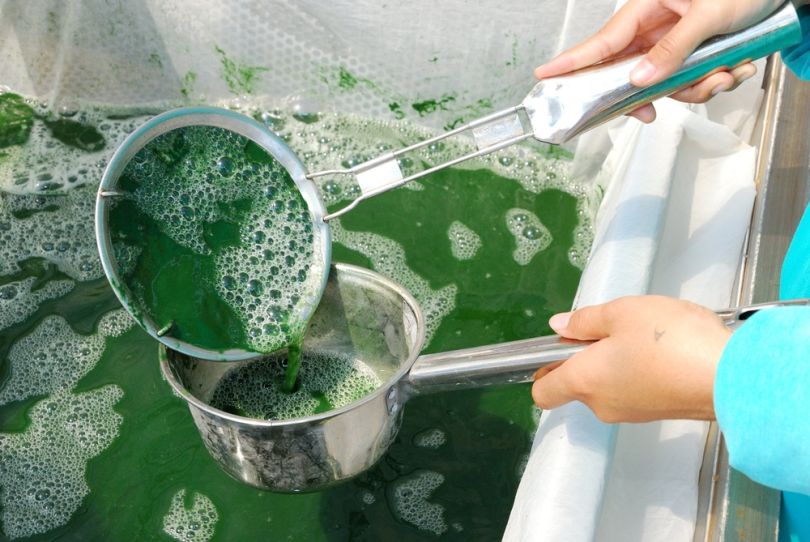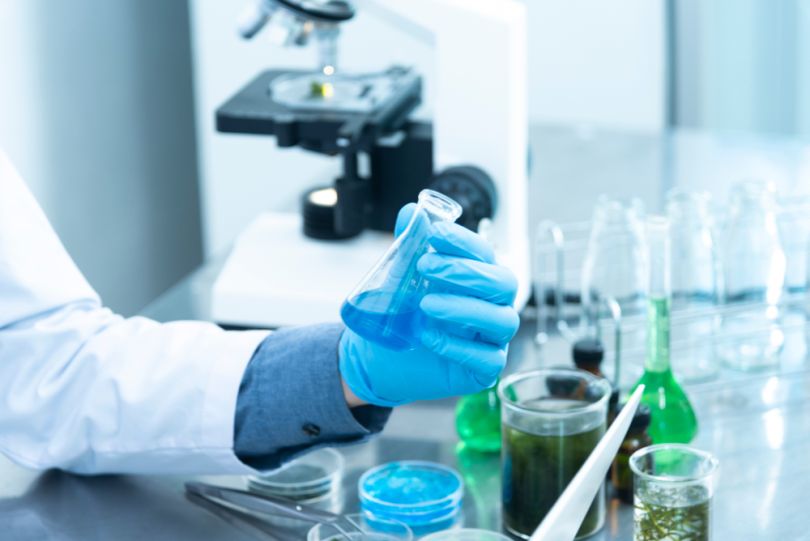Inside Hypergiant Industries’ research lab, a room where founder Ben Lamm’s biggest ideas come to life, there’s a fish tank filled with 55 gallons of algae.
The collection of neon-green photosynthetic eukaryotes growing inside are part of the AI-consulting firm’s latest high-tech project. Daniel Haab, Hypergiant Industries director of research and development, is used to turning Lamm's futuristic ideas into prototypes. Usually, it involves things like neural networks and astronaut helmets with an Iron-Man-inspired heads-up display that would make Tony Stark jealous. But this time, he wanted him to find a solution to carbon emissions.
Haab’s research led them to the idea of combining AI technology with algae, one of Mother Nature’s most efficient carbon-scrubbers. The resulting tank is part of the company’s Eos Bioreactor prototype, which it unveiled to the public in an announcement on Tuesday.
We can build an ecosystem of adoption around this technology because of where we are and some of the things we're really good at, like AI.”
While that may seem like an odd fit for an AI-consulting firm that has focused on space technology and AI, Lamm has become a vocal proponent of advancing climate research in the Austin tech scene. Hypergiant’s bioreactor is the first algae factory that can fit inside city offices or homes.
“We can build an ecosystem of adoption around this technology because of where we are and some of the things we're really good at, like AI,” Haab said. “It’s a natural extension of who we are.”
If it gets adopted, it could have a significant impact on Earth.

Wait, Algae?
When Lamm first approached Haab with the goal of developing a plan to remove carbon emissions from the air, his first thoughts naturally went to planting trees. But as his team collected data and created models on where they’d need to plant those trees, it became clear the project wasn’t feasible.
“You'd have to have hundreds of countries and an unprecedented amount of people working together to plant those trees,” Haab said.
Instead, his team’s research led him to another carbon-sucking organism — algae. The protist — another fancy name for a eukaryotic organism that isn't a plant, fungus or animal — has been around for at least 1.6 billion years, but lately, it has been tabbed by environmentalists as the ‘it’ renewable resource of the future, according to a story in Forbes.
Like plants, algae need water, sunlight and loads of carbon dioxide to grow. But the organism is 400 times more effective at removing carbon dioxide from the air than trees and needs far less space to grow.
If that were all, algae might simply be a nice alternative to planting trees, but it’s the use-cases of algae that have environmentalists excited. Microalgae like Spirulina and Chlorella are rich in protein and contain loads of nutritional vitamins, fats and fiber. As the global population continues to grow, the ability to grow mass quantities of algae quickly make it a valuable, carbon-neutral food source. Algae can also be used in cosmetics, oils, plastics, feedstock and more.
The U.S. Department of Energy and companies like ExxonMobile have also looked into using algae as a biofuel — although companies have yet to find an efficient way to convert it to fuel.
Combined, these attributes make algae a perfect carbon-sucking machine.

What is an algae bioreactor?
Factories around the globe have started to build algae farms attached to their plants in an effort to reduce their carbon emissions. These farms fall into two categories: open systems and closed systems.
An open system is essentially the scientific term for growing algae in a pond. A closed system involves growing algae in a series of tubes, plates or columns, allowing for more control over its growth.
What we've done is simply try to optimize the environment that algae likes to grow in.”
Hypergiant’s Eos Bioreactor employs a closed system much like other factories, but unlike those factories, it’s significantly smaller in size. Hypergiant aimed to build one that could operate seamlessly inside office buildings and throughout a city, Haab said.
The Eos Bioreactor is about the size of a refrigerator and has the ability to sequester as much carbon as an acre of trees, Haab said.
“What we've done is simply try to optimize the environment that algae likes to grow in,” Haab said.
To do so, its design includes a fish tank at the bottom connected to a series of vertical tubes, where the algae grows. The device also has an air pump that takes in ambient air and carries the CO2 to the algae.
Inside the system, there are about a dozen sensors that are constantly measuring everything from the pH level to carbon dioxide, light, the algae’s circadian rhythm and more, Haab said. Hypergiant has been collecting that data to tweak the environment the algae is growing in to find the optimal conditions for growth.
Eventually, that data will be monitored through AI, allowing the device to react to its surroundings and optimize for perfect growing conditions.
“These reactors need to be relatively autonomous,” Haab said. “You're not going to have a person with a PhD on hand to monitor it. So the machine has to be able to understand their environment and react to things appropriately, and they have to have some level of autonomy.”

A Lasting Impact
The company’s initial bioreactor design is intended for offices, which contain surprisingly high carbon levels. Average amounts of carbon dioxide in the air in an office hovers around 405 parts per million, but in conference rooms, it can soar to 2,000 parts per million, Haab said.
Later this year, Hypergiant plans to distribute the blueprint for its device to the online maker community, where people can build their own Eos Bioreactors or improve on it.
“We want this to be modular,” Haab said. “We want somebody to be able to build it in their garage and start producing algae for fertilizer or to put in a smoothie.”
We see right now as a turning point in awareness to the potential that algae can play in the larger climate change conversation”
Ultimately, Hypergiant aims to do what it does for all of its projects, to shift the conversation around what’s possible through AI. Algae may not be the cornerstone of the company, but it hopes its bioreactor can have a lasting impact.
“We’re looking at algae not just as a one-time solution that we can use through the bioreactor but across industries and functions,” said Kristina Libby, EVP of Future Sciences at Hypergiant. “We see right now as a turning point in awareness to the potential that algae can play in the larger climate change conversation.”




